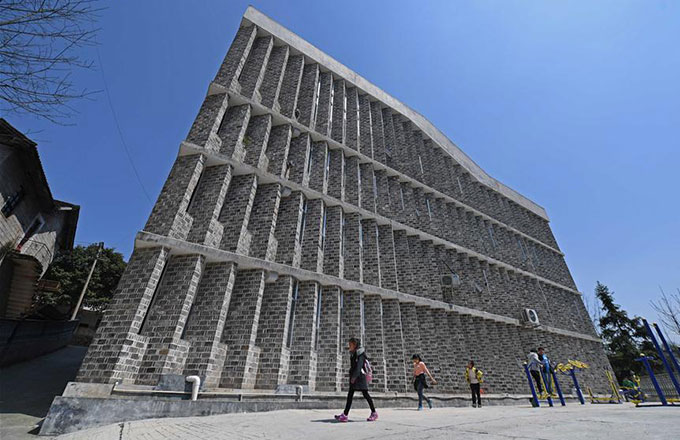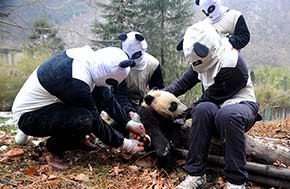National park to drive revival of wild pandas
Return to the wild
Hou said the national park plan has had to address significant economic and practical challenges because Panda-conservation work has three major stages: breeding; reintroduction to the wild; and the national park.
"We had to start captive-breeding programs in the late 1990s because panda numbers fell dramatically in the 1980s, partly because of a periodic natural die-off of bamboo," he said.
Scientists worked to breed the reclusive animal in captivity, overcoming a number of early failures. Last year, 64 cubs were born, and 54 of them now live in nature reserves and zoos, according to the State Forestry Administration.
Scientists are also troubled by the pandas' inbreeding. For many years, they worked with international research teams to make pandas one of the most genetically diverse animals in captivity.
To enrich the gene pool, the conservation and research center started the reintroduction program in 2003. It reintroduced seven pandas into the wild, but two died.
Keeping the animals behind bars is the last thing Zhang Hemin, the center's deputy director, wants. "The goal of breeding and reintroduction is to eventually put the animals back into bamboo forests and expect them to mate with their wild cousins," he said.
Thanks to the center's conservation efforts, 1,864 pandas remain in the wild, a rise of 17 percent from a decade ago, according to the most recent national survey, conducted in February 2015.
The aim is to raise the wild population to more than 2,000 by 2025, which will require a large protection area and an upgraded ecosystem. "That's why many scientists and conservation experts support the building of a national park," said Hou, who proposed the idea in 2014.
Few people are aware of how pandas live in the wild, he added. Much of their range is fragmented, and only a few large continuous tracts remain where the animals can roam freely.
According to a report by the World Wildlife Fund, roads and railroads are increasingly fragmenting the forest, which further isolates panda populations and prevents them from mating, while the destruction of forests reduces their access to the bamboo they need to survive.
Some sub-populations number fewer than 10 members, making them vulnerable to disease and reproductive problems, and less able to adapt to a changing environment.
Challenges
While the park paints an encouraging picture of panda conservation and the restoration of the ecological system, it also faces challenges and risks.
Restoring effective corridors for panda migration is no easy task. Twenty plans for corridors across the six mountains have been proposed since 1988, but few have come to fruition.
"China still needs to conduct more empirical studies and to carry out conservation activities to put these corridors into real use," said Melissa Songer, a conservation biologist at the Smithsonian's National Zoological Park in Washington.
In 2015, the National Development and Reform Commission and the Paulson Institute in Chicago signed a cooperation framework protocol to conduct pilot programs and case studies.
"Past experience has shown us how much a national park can do for a country's environment and ecology," said David Wildt, a senior scientist at the Smithsonian's Conservation Biology Institute.
"I am delighted to see China's breakthrough in panda breeding-and-reintroduction programs. But it's time to test if these measures work out in the new system of national parks."
 |
|
A female panda teaches her cub to climb a tree at a research center in Sichuan.Provided To China Daily |




















